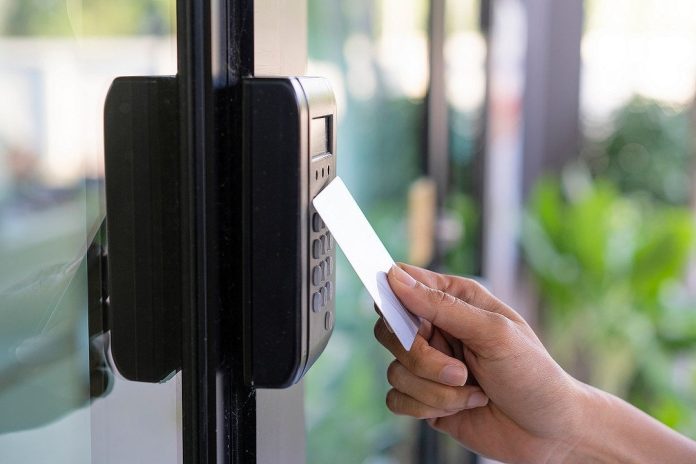One of the challenges faced when choosing an electronic locking device is that different types of lock are often generally suitable for a range of applications, making it hard to work out which option is going to be best.
When you’re making your electronic locking selections, think about the realities of your own site. Something to consider early on is the preload of an electric strike – in specifications this force is often measured in Newtons which are a value of force rather than weight or pressure. Essentially 1 Newton is the force required to accelerate a mass of 1kg at the rate of 1 metre per second, per second. If you find it easier to think of force in terms of weight measurements, a Newton is about 0.224809 pounds or 0.101972 kg of force.
This pre-load issue relates to jamming of electrically operated doors caused by pre-loads that are higher than the strike is rated to handle – a quality fire rated lock might have a pre-load rating of around 200N and the entire locking solution will need to match this. There’s debate around pre-load, so you should talk to the experts and get your head around it as part of the process.
In addition to pre-load, high security emergency exit locks will offer side-load immune release mechanisms. You might want this capability if your locks are going into egress points likely to carry large numbers of people in the event of emergency evacuation. Emergency doors and egress doors should open outwards. Doors installed this way guarantee a crush of people on the inside of a locked door can never block an inward opening emergency exit.
Supporting this sort of installation, side-load immune locking mechanisms guarantee that no matter how much pressure panicked people put on the inside of an electrically locked door, the locking mechanism will still release in the event of a fire alarm and/or a fail-safe event.
Another fundamental question security managers and installers will face relates to whether or not the door is fire rated or simply an internal access point. Fire rated doors need a heavy-duty strike that has a fire rating and is specifically designed for high use applications.
Adding to the security manager’s dilemma will be the different types of door jamb – variations have differing needs and you’ll want to assess these requirements before deciding. The 3 most common jamb types are timber, aluminium and steel. You’ll most commonly run into timber and aluminium door jambs in front and internal doors, with steel jambs used for fire-proof doors.
Complexity is also going to be introduced by relevant building codes – some codes insist that in drywall installations (either metal or timber jambs) only internal solenoid locks are used, and must teamed up with tall faceplates that spread load to ensure minimum gouging of the wall itself.
Typically, hollow steel or aluminium jambs will accommodate pretty much any electric strike of suitable size. Things do get complicated with aluminium-framed glass doors. The glass is usually encased in the 3-odd centimetre wide jamb surface of the jamb, making installing the strike particularly hard.
Essentially it means the installer is required to put in a strike that’s compact enough to fit the jamb width without cutting the glass. Obviously, the most compact and the most secure strikes are not always the same thing, and in most cases, finding some sort of balance between architecture and protection will test security policy.
The same rules that apply for drywall installs should also be used as guidelines for concrete filled metal jambs – concrete is often used as a stabilizer in fire doors. Installs like this need a low-profile strike with an internal solenoid.
Another thing to consider is the existing lockset. The lockset type will have a determining effect on the strike chosen. Installers are usually expected to match whatever lock the interior designer or architect has chosen with the needs of an electric strike and seldom will the needs of the 2 mechanisms be met.
At the very least, security managers should make sure installation teams get the benefit of working with an ANSI lock style that is catered for by strike manufacturers. Trying to wring some sort of security from architectural locks chosen on the basis of aesthetics will always compromise security. You’ll obtain a seal but only if no force is applied to the locked door.
The problem works in reverse, too. In the interests of coming up with the most competitive quote, a non-grade electric strike will be installed to keep a Grade 1 heavy duty lockset. These 2 will not be good friends. The problem is that the lockset is burdening the strike – especially if there’s any traffic using the egress point.
Any combination of heavy-duty mortise lock incorporating a steel 3-piece anti friction latch and an auxiliary dead latch feature; with a light duty electric strike complete with a narrow style zinc cast faceplate, a zinc cast latch keeper, and shallow cavity depth or height that’s designed for light applications simply builds in malfunction.
Installers forced to team up this sort of combination on glass doors that lack room for a properly matched and graded electric strike should argue a case for electromagnetic locking solutions.
#sen.news









